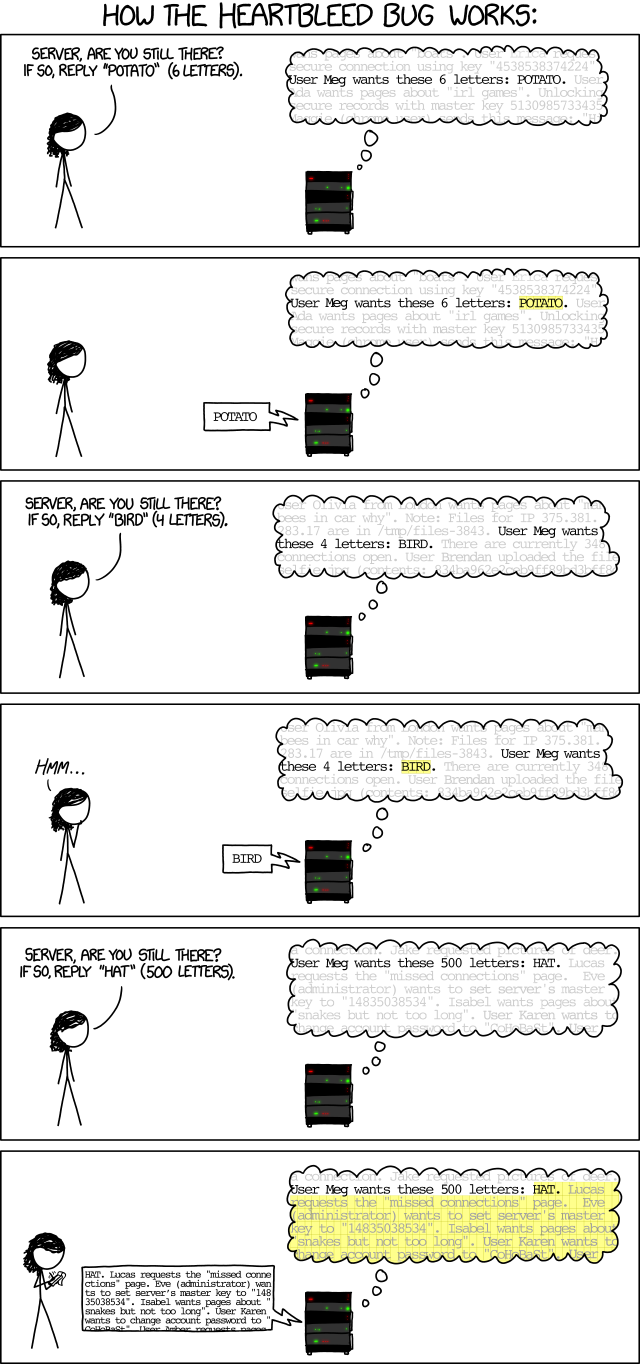Many of you will have seen reports in the media of a vulnerability that has been recently discovered called Heartbleed. Heartbleed is a problem in OpenSSL, a software library that is used by most websites to secure your communication using SSL. It provides the S in HTTPS, or if you prefer, it's what's responsible for the padlock icon in your browser's URL bar while browsing the web*.
Having spent a week dealing with the fallout of this and helping customers to check and upgrade their systems and mitigate any potential impact, I've now got around to looking at the Humax.
There is an option to enable encryption (HTTPS) in the webif package and I know that many people use this to encrypt traffic to and from the web interface for when they are accessing it over the Internet. The good news is that the OpenSSL library on the Humax is version 1.0.0a and is not vulnerable to the Heartbleed exploit.
* Normally when browsing a site using SSL, you can trust that the information you
send to the website can only be seen by the website itself. This keeps your
private information, such as credit cards, usernames, and passwords, secure.
The Heartbleed exploit enables attackers to bypass the protections provided by
SSL. This means any information you sent to a website that relied on vulnerable
versions of OpenSSL could potentially already be in the hands of the bad guys.
http://heartbleed.com/ has a lot of information regarding the vulnerability and XKCD has published a comic strip which explains it all rather nicely.

Having spent a week dealing with the fallout of this and helping customers to check and upgrade their systems and mitigate any potential impact, I've now got around to looking at the Humax.
There is an option to enable encryption (HTTPS) in the webif package and I know that many people use this to encrypt traffic to and from the web interface for when they are accessing it over the Internet. The good news is that the OpenSSL library on the Humax is version 1.0.0a and is not vulnerable to the Heartbleed exploit.
* Normally when browsing a site using SSL, you can trust that the information you
send to the website can only be seen by the website itself. This keeps your
private information, such as credit cards, usernames, and passwords, secure.
The Heartbleed exploit enables attackers to bypass the protections provided by
SSL. This means any information you sent to a website that relied on vulnerable
versions of OpenSSL could potentially already be in the hands of the bad guys.
http://heartbleed.com/ has a lot of information regarding the vulnerability and XKCD has published a comic strip which explains it all rather nicely.


